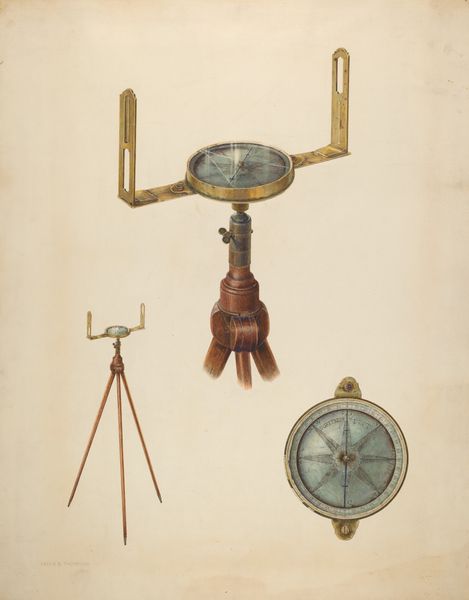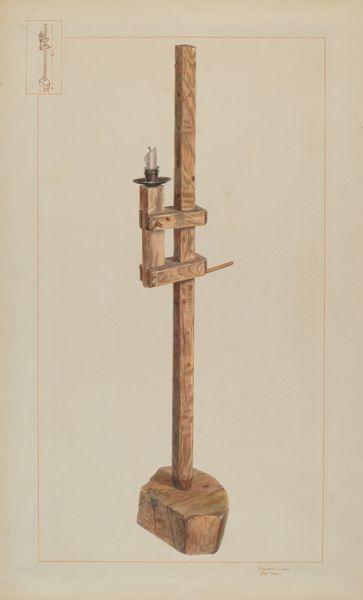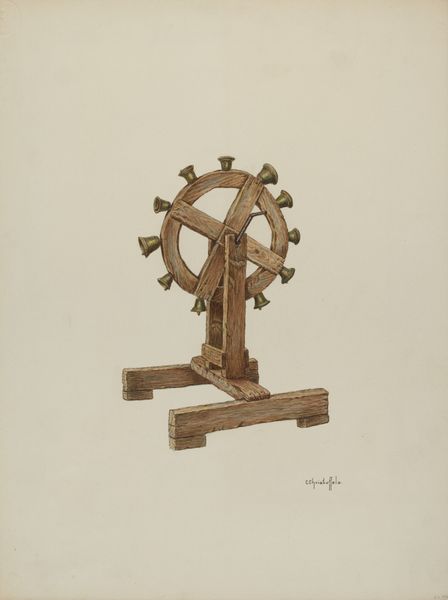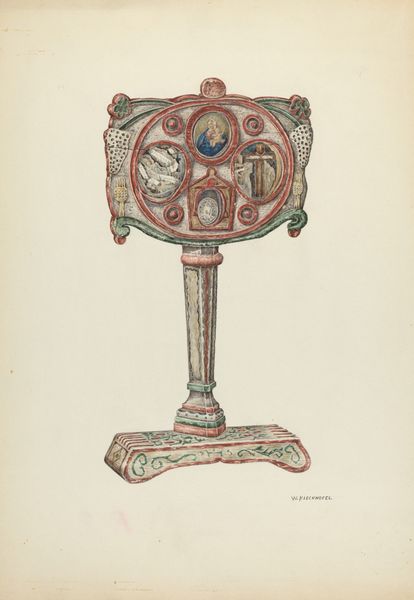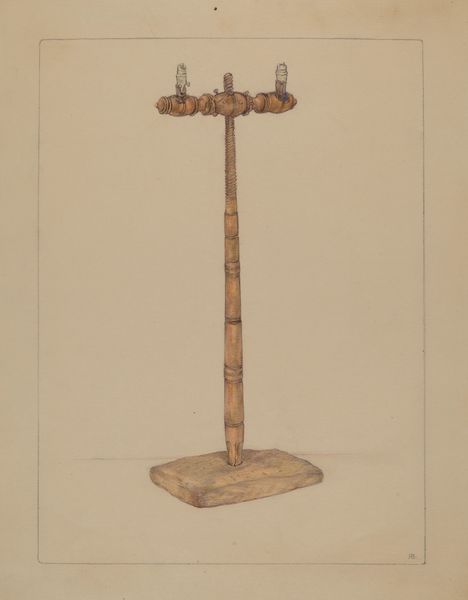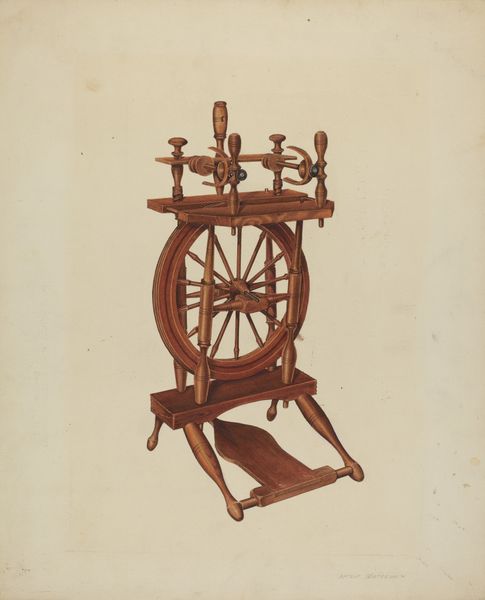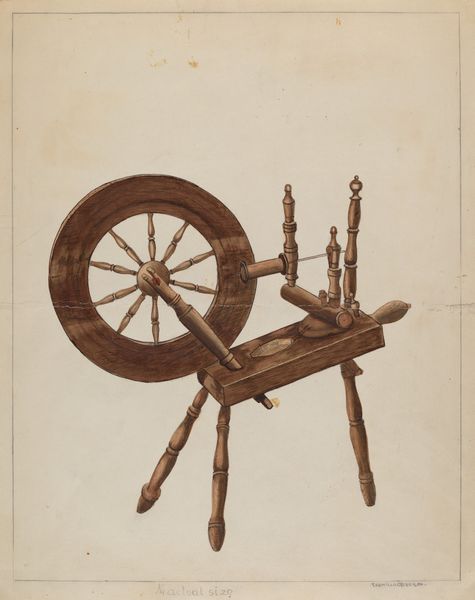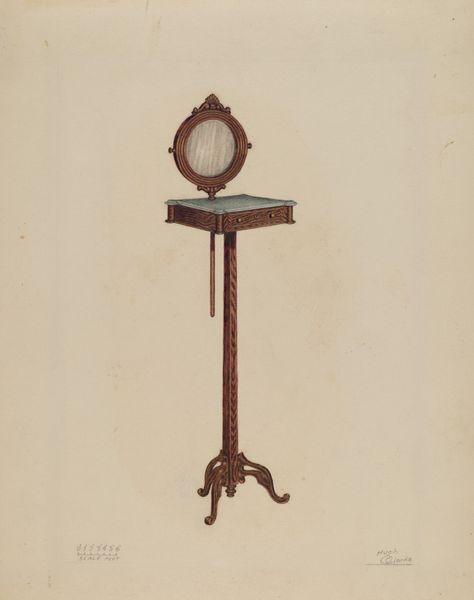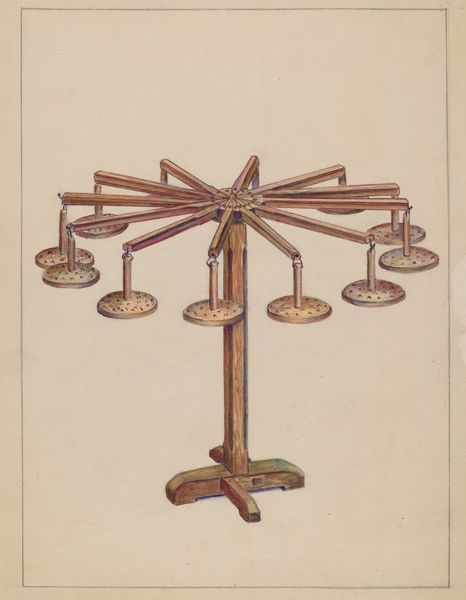
drawing, watercolor
#
drawing
#
watercolor
#
watercolour illustration
#
realism
Dimensions: overall: 30.1 x 22.3 cm (11 7/8 x 8 3/4 in.) Original IAD Object: 86"high overall; 44"wide. See data sheet for dets.
Copyright: National Gallery of Art: CC0 1.0
Curator: Let’s discuss this watercolor illustration by Edward L. Loper, created around 1936, entitled "Combination Hat Rack and Umbrella Stand.” What strikes you initially about the composition? Editor: There's a starkness in the almost brutalist rendering. The colors are muted, limited mostly to earth tones, but the forms are quite striking, angular, with some delicate touches where you'd expect decoration on a hat rack. It makes you wonder about functionality. Curator: Absolutely. During the 1930s, function became incredibly important. The Great Depression fostered a movement toward utilitarian design. Combining form and purpose to uplift society became integral to design philosophy and, ultimately, social progress. Editor: Looking at that circular hat rack at the top—with its odd protrusions—makes me consider the geometry: how that circle is echoed by the basin at the base for umbrellas. It creates a visual rhythm, doesn't it? There’s a kind of austerity at play, but the structure is quite beautiful. Curator: It's a subtle social commentary. Art and design often responded to prevailing economic conditions by emphasizing practicality and efficient use of space. This watercolor reflects that ethos, promoting functionality within everyday objects and homes affected by new budget limitations. Editor: The material quality depicted in watercolor adds to that, creating textures which soften what could easily feel cold or machine-like. Notice how light gently reflects off its various surfaces and shapes – so that we retain visual information while also noting any inherent austerity in design? It speaks volumes about technique. Curator: Precisely. Loper was reflecting a wider cultural push toward simplification, mirroring national recovery efforts that emphasized resilience. So, although modest, it still holds significance. Editor: It encourages a renewed appreciation for efficient art; almost an aesthetic manifesto given these pressing historical factors from his generation's socioeconomic experience, isn’t it? A call to embrace simplicity perhaps? Curator: Absolutely. It underscores design's capacity to meet both practical demands, represent social challenges of the 1930s era of great social change! Editor: Yes, and through that representation, creating new visual expressions, the hat rack becomes so much more than simple utility. A design for living through difficult times becomes a form worth noting.
Comments
No comments
Be the first to comment and join the conversation on the ultimate creative platform.
